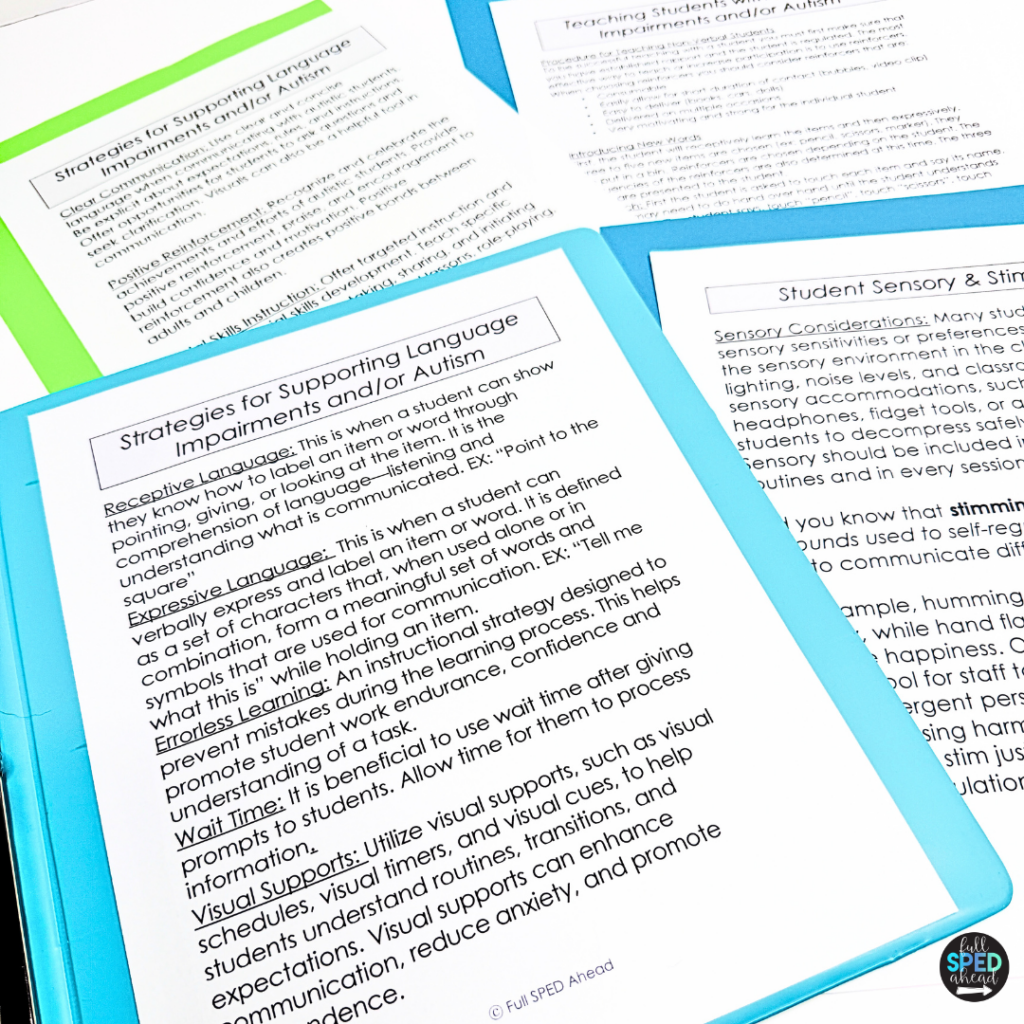In the realm of special education, the collaboration between teachers and paraprofessionals (also known as classroom assistants or paraeducators) is critical for creating an effective and supportive learning environment for students. However, to ensure this partnership is successful, it is essential that clear expectations, routines, and responsibilities are established from the start. One indispensable tool that can facilitate this process is a Paraprofessional Training Binder. This blog post will highlight the importance of having a comprehensive binder and how it can assist special education teachers in setting expectations and routines for their paraprofessionals.

Paraprofessionals play a vital role in special education classrooms. They support teachers by providing direct assistance to students, helping with classroom management, implementing instructional plans, and carrying out individualized education programs (IEPs). Paraprofessionals are often the unsung heroes who ensure that students receive the personalized attention and support they need to succeed.
Given their significant responsibilities, it is crucial that paraprofessionals are well-prepared and informed about their roles. This is where a Paraprofessional Training Manual comes into play.
Clear Expectations and Roles: One of the primary benefits of a Paraprofessional Training Binder is that it sets clear expectations and defines the roles and responsibilities of paraprofessionals. By outlining specific duties, such as assisting with academic tasks, managing behaviors, and supporting daily routines, the binder helps paraprofessionals understand what is expected of them. This clarity can prevent misunderstandings and ensure that everyone is on the same page.

Consistent Routines and Procedures with a Paraprofessional Training Binder: Consistency is key in special education settings, where students often thrive on routine and predictability. A well-organized training binder can include detailed descriptions of classroom routines, such as morning entry, transitions, and end-of-day procedures. It can also provide step-by-step instructions for implementing specific interventions or accommodations. This consistency helps paraprofessionals confidently follow established routines, which in turn supports a stable and structured learning environment for students.
Efficient Communication: Effective communication between teachers and paraprofessionals is essential for addressing students’ needs and ensuring smooth classroom operations. A training binder can include communication protocols, such as how to report incidents, share observations, or request additional support. By having these protocols in place, paraprofessionals can communicate more efficiently with the lead teacher, fostering a collaborative and responsive classroom culture.

Training and Professional Development: A comprehensive paraprofessional training binder can serve as a valuable resource for ongoing professional development. It can include training materials, instructional strategies, and behavior management techniques that paraprofessionals can reference as needed. This continuous access to training resources empowers paraprofessionals to enhance their skills and knowledge, ultimately benefiting the students they support.
Personalized Support for Students: Every student in a special education classroom has unique needs and goals. A training binder can include individualized student profiles, highlighting each student’s strengths, challenges, and specific accommodations. This information helps paraprofessionals provide personalized support that aligns with each student’s IEP. By understanding the unique needs of their students, paraprofessionals can more effectively contribute to their academic and social-emotional development.
Creating a Paraprofessional Binder may seem like a daunting task, but it doesn’t have to be. The Editable Paraprofessional Binder for Autism and Special Education Classrooms available on Teachers Pay Teachers is an excellent resource to get started. This binder is customizable, allowing teachers to tailor the content to fit the specific needs of their classroom and students.

A Paraprofessional Binder is an invaluable tool for special education teachers, providing the structure and guidance needed to set expectations and routines for classroom assistants and paraeducators. By establishing clear roles, consistent routines, and efficient communication protocols, the binder ensures that paraprofessionals are well-prepared to support their students effectively. Investing time in creating a comprehensive training binder will not only enhance the collaboration between teachers and paraprofessionals but also contribute to a positive and successful learning environment for all students. If you’re ready to get started, consider using the editable binder resource available on Teachers Pay Teachers to streamline the process and set your classroom up for success!

Read more about Paraprofessionals:
How to Train Your Paraprofessionals
Collaboration between Paraprofessionals and Teachers
What are you looking for?
COPYRIGHT © 2025 Full SPED Ahead